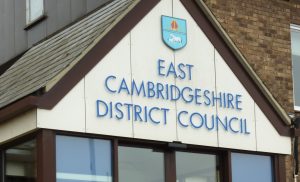My budget speech as Chair of Cambridgeshire County Council’s Environment & Green Investment Committee
It is an enormous privilege to speak today as Chair of this Council’s Environment & Green Investment Committee in support of this first Joint Administration budget.
Our Joint Administration agreement committed us to work towards a greener, fairer, and more caring Cambridgeshire. I believe firmly that our budget proposals today are a significant step on that journey.
Flooding and the risk of flooding has been very much on the minds of Cambridgeshire residents, particularly since the events of December 2020. Much of that work sits in Highways but the Environment & Green Investment Committee also has a major role to play.
I have already spoken today about the cooperation that is needed across public and private bodies to take effective action on flood protection. This spirit of cooperation is reflected in the draft Local Flood Risk Management Strategy, and its associated draft Action Plan with tasks assigned to many of those bodies. These documents have been issued for public consultation, comments have been received, and we are currently reviewing these, prior to finalising the plan. Councillors from the Group opposite will be involved in that work.
And that cooperative spirit is also evident in the ongoing work of the Cambridgeshire & Peterborough Flood & Water Partnership, which I chair. Now that the revised Local Flood Risk Management Strategy is approaching completion, I have opened up discussion with other members of the Partnership about the potential to refocus its work towards overseeing the schemes in the Action Plan.
Shared planning and priorities will enable the best use to be made of every partner’s resources, including our own. Our new £14M Just Transition fund will be a key part of this process.
We have included £150,000 for the coming year in our budget to continue the Community Flood Action Programme beyond its initial year, and allow this excellent initiative to expand, engaging more residents in working alongside us to protect their communities. During this year, I attended the first visit of the Floodmobile to the community of Alconbury Weston, and on Thursday next week I look forward to its visit to my own village of Sutton.
Our Joint Administration agreement also undertook to look for ways to promote biodiversity and increase Cambridgeshire’s natural capital. Cambridgeshire is one of the most biodiversity-deprived counties in the country. We inherited a commitment from the outgoing administration to a 20 per cent biodiversity net gain, but no baseline from which to measure it.
We moved quickly in-year to allocate £109,000 towards staff capacity, a biodiversity audit, and site repairs; and we have now added £105,000 to the budget for the forthcoming year to develop the actions required for the biodiversity commitments in our Climate Change & Environment Strategy, and to ensure the best biodiversity and natural capital benefits are gained from the council’s own public assets.
We will also be funding an investigation into establishing an Active Parks Unit within the council.
I have mentioned climate change. Our revised Climate Change & Environment Strategy was referred unanimously from the Environment & Green Investment Committee, and I hope it will receive unanimous support here later today. Our budget includes a commitment of £340,000 in this coming year, and reducing sums for the two years after that, to support the delivery of that strategy and help reduce carbon emissions on the part of the council and of Cambridgeshire more widely.
Our capital budget sees work progress on the many excellent energy schemes in Cambridgeshire—from those currently under way, to those in their exploratory stages. Swaffham Prior’s Community Heat Scheme. Smart Energy at St Ives, Babraham, and Trumpington. Energy projects at Stanground and Woodston. Solar at North Angle and Fordham. Support to get schools and communities off oil, and to improve the carbon efficiency of council assets and services. And continuing significant investment in decarbonising 69 council owned and occupied buildings. All council buildings will be taken off fossil fuels, and low carbon heating solutions installed, with investment expected to be recouped in full from savings delivered on the council’s energy bills.
This council also continues to work with the Cambridgeshire & Peterborough Combined Authority on improving fixed and mobile internet connectivity.
I also want to say a few words about the council’s County Farms working group, which I chair and which reports into the council’s Strategy & Resources Committee. The budget reflects the hard work the farms team is doing in securing increases in rental income, along with capital investment at Lower Portland Farm at Burwell in particular, and potential opportunities across the county. The county farms team have had a challenging few years, and I very much hope the council corporately will continue to support them and recognise their valuable and much appreciated work.
In conclusion, I would like to thank the absolutely excellent officers who report to my committee. They have been quite frankly a joy to work with. And I would of course also like to thank my vice chair and Independent lead member, Cllrs Nick Gay and Stephen Ferguson, and the members of the Environment & Green Investment Committee for their commitment to this vital area of the council’s work.









